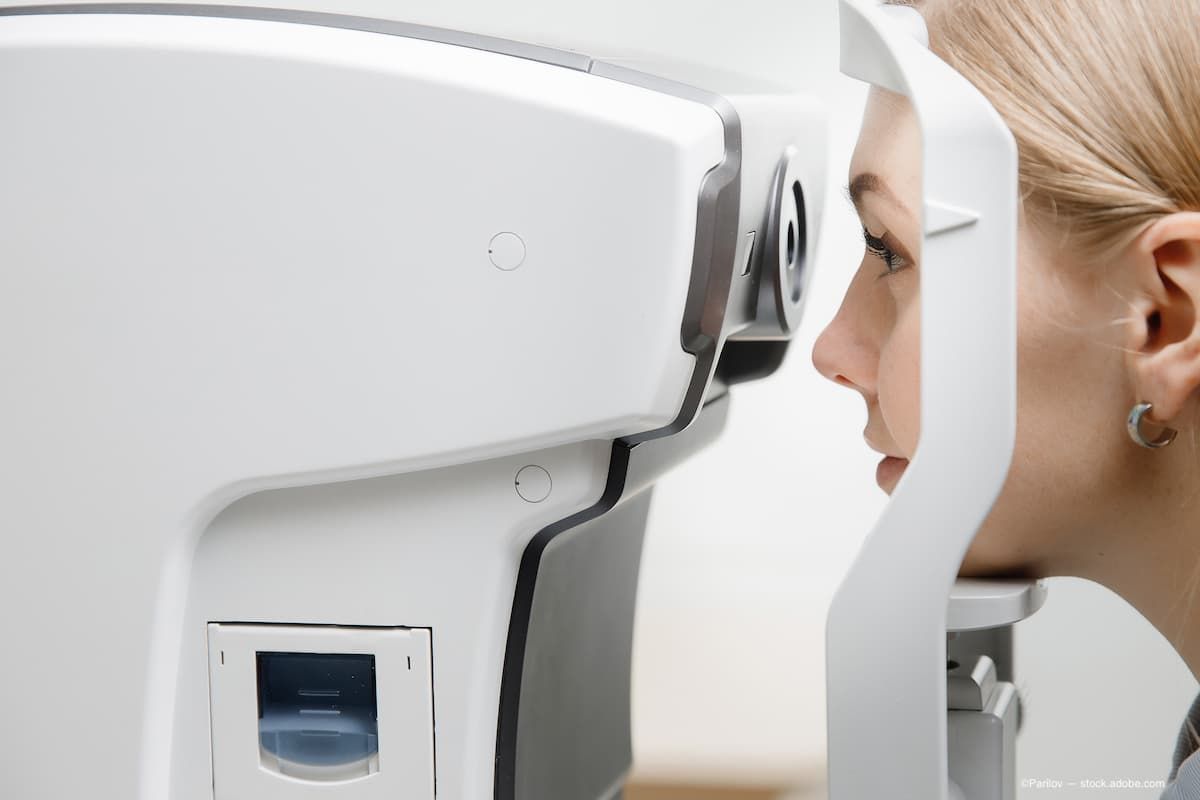Article
Technology advance lays groundwork for OCT eye imaging at home
Author(s):
An inexpensive laser could increase access to OCT imaging, helping to catch eye problems early.
(Image Credit: AdobeStock/Parilov)

Researchers have shown that a vertical cavity surface emitting laser (VCSEL) diode, which is commonly used in telecommunications and lidar applications, could offer a less expensive light source for swept-source optical coherence tomography (OCT). This advance could lead to ophthalmologic OCT systems that are practical for use outside the ophthalmology clinic, even at home.
“OCT has become a standard imaging tool in ophthalmology for diagnosing and monitoring diseases like glaucoma, macular degeneration and diabetes-related retinopathy,” said research team member Milana Kendrisic, from the Medical University of Vienna in Austria.“However, the price of laser sources and the complexity of OCT systems hinder its accessibility outside of clinics and hospitals, in particular for home care or point-of-care use.”
According to a news release, while single-mode VSCELs usually operate using a constant current, the researchers varied the current to achieve the changes in the wavelength, or color, needed for swept source OCT.
In the study, which appeared in Optics Letters,1 the researchers describe their custom OCT setup that incorporates a VCSEL and advanced post-processing algorithms. They used the setup to obtain full-eye scans on a healthy volunteer.
Kendrisic noted in the news release the researchers hope to develop a low-cost OCT device that could be used in a general practitioner’s office, a pharmacy or even a supermarket to allow eye checkups without going to the ophthalmologist.
“It could also allow home-based treatment monitoring for patients with age-related macular degeneration or eye health in diabetes patients to monitor treatment or catch abnormal changes early, avoiding loss of vision and ultimately preserving quality of life,” Kendrisic said. “This might be done by renting an easy-to-use device from your insurance provider, for example.”
Finding a less expensive laser
The researchers explained in the news release swept-source OCT is a relatively new OCT approach that became clinically available for eye imaging in 2010. It uses a laser that changes wavelengths over time to enable high-quality visualization of multiple parts of the eye. Although this new approach reveals details that are being used to better understand and diagnose eye disorders, swept-source lasers usually cost tens of thousands of dollars.
According to the news release, the team set out to determine if a less expensive VCSEL diode could be used in place of the expensive swept-source laser. While VCSEL diodes typically produce a laser output beam at a certain well-defined wavelength, if the diode’s operating temperature changes, the output wavelength will also change.
“Our idea was to leverage an unwanted effect of wavelength shifting with temperature to make these diodes usable for OCT,” Kendrisic said in the news release. “We deliberately induce a temperature change by ramping up the driving current in a short time to high values beyond its original specifications. This is followed by a cooling period to avoid deterioration of the diode material, which lets us tune the diode over a broader bandwidth than is otherwise possible.”
However, other groups have been able to show that VCSELs can be used for OCT, though those systems were not designed for eye imaging. Because the eye is mostly filled with water, the researchers used a VCSEL that operates at 850 nm, a wavelength that isn’t absorbed strongly by water. According to the release, this allows the laser light to travel through the eye to the retina and back to the detector without losing the signal to absorption.
Kendrisic pointed out in the news release that while commercial swept sources have larger spectral bandwidths, the researchers showed that even the small range we achieved with a VCSEL is sufficient to perform OCT.
“These laser diodes could cost as little as a few dollars each if bought in bulk and also allow large distance ranging, which is needed for covering the full length of the human eye from cornea to retina,” Kendrisic said.
Acquiring images of the eye
After figuring out the best way to increase current to the VCSEL without damaging the laser while also ensuring the best possible resolution for imaging, the researchers incorporated it into an optical setup for performing ophthalmic OCT imaging. This system, which included some extra components to maintain system performance and advanced post-processing algorithms, performed very well, especially in terms of sensitivity and imaging depth.
The researchers then tested the system by using it to image the eye of a healthy volunteer and were able to extract biometric information such as the axial eye length and anterior chamber depth with axial precision comparable to commercial OCT systems. The results also show the potential of the technology for use in biometric eye scanner systems used for security purposes.
Kendrisic noted in the news release that while VSCEL-based systems have some limitations in terms of image quality, they still have the potential to expand access to diagnostic imaging and improve patient care in areas where traditional OCT systems may not be available or affordable.
“Our paper emphasizes the use of this technology for ophthalmic applications, but lowering the price of OCT devices will allow an easier introduction of OCT technology in other fields as well – both medical and technical,” Kendrisic concluded.
Before a VSCEL-based system could be commercialized for eye exams, large scale clinical studies and source lifetime tests would need to be performed to prove the system’s clinical relevance and longevity.
Reference:
M. Kendrisic, V. Agafonov, M. Salas, L. Ferrara, M. Niederleithner, H. Resch, S. Steiner, C. Vass, W. Drexler, R. A. Leitgeb, “Thermally-tuned VCSEL at 850 nm as a low-cost source alternative for full eye SS-OCT,” Opt. Lett., 48, 11, 3079-3082 (2023). DOI: https://doi.org/10.1364/OL.489050
Newsletter
Don’t miss out—get Ophthalmology Times updates on the latest clinical advancements and expert interviews, straight to your inbox.





